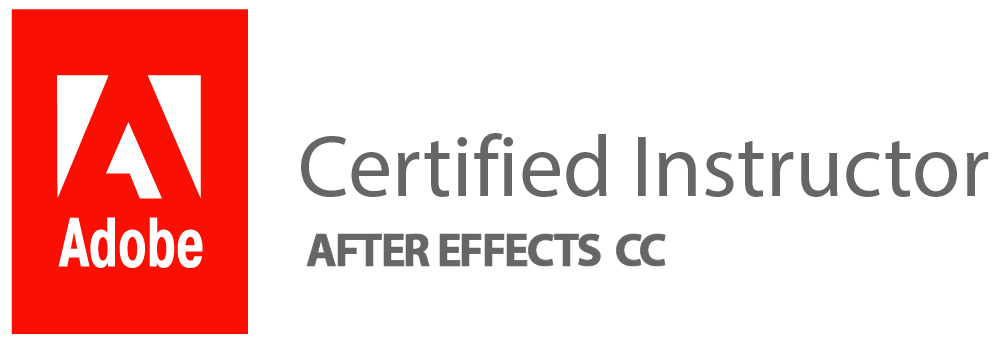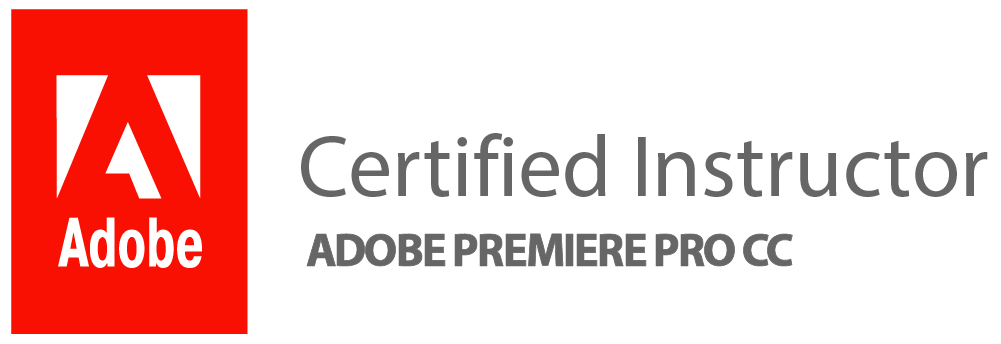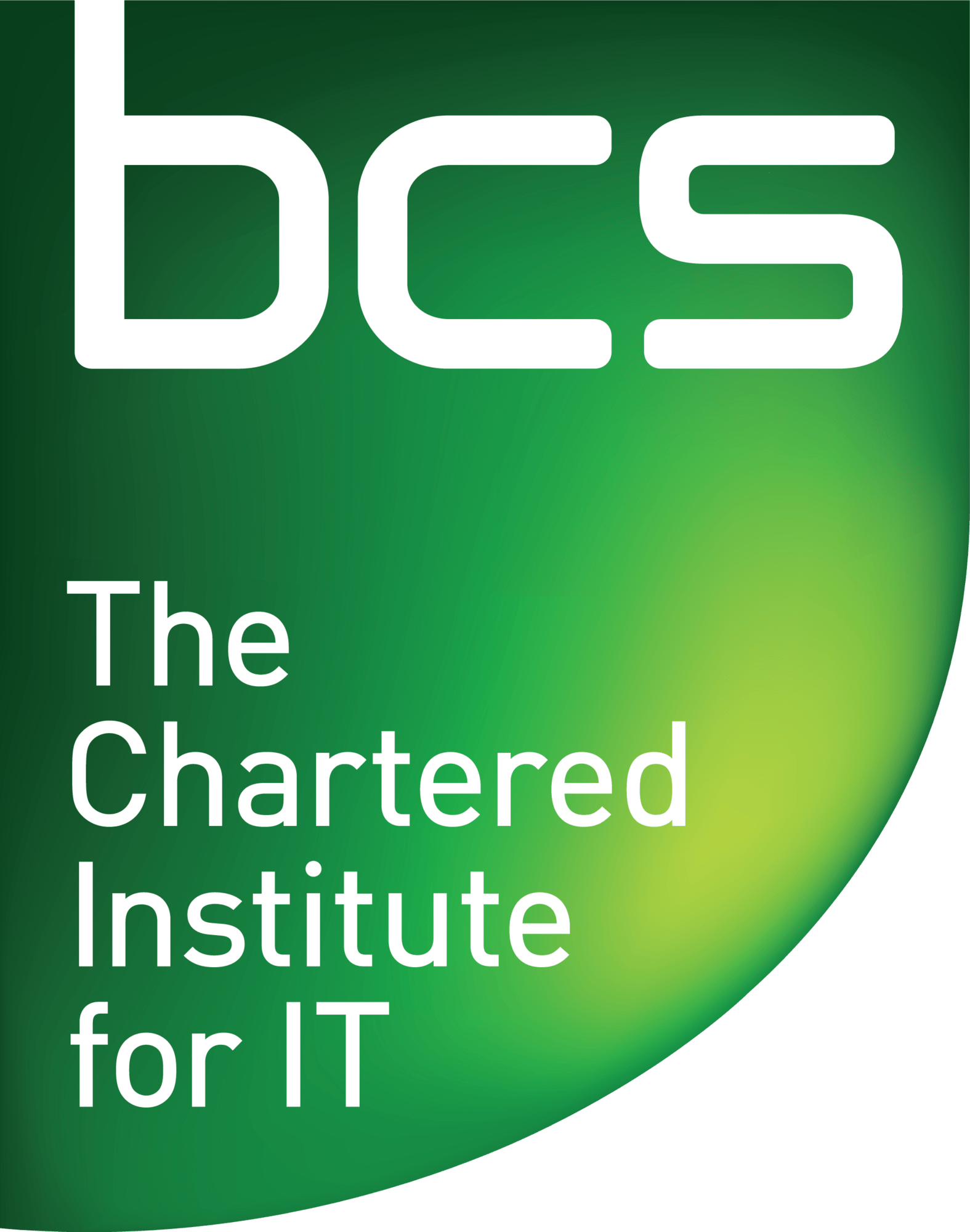What Do You Think About Digital Artist As A Job?
In a graphic design course, students learn a variety of skills and techniques that are essential for the field. They start by learning the basics of design theory, including colour theory, composition, typography, and visual hierarchy. Understanding these principles allows them to effectively communicate their ideas through visual elements.
Students also learn how to use industry-standard software such as Adobe Photoshop, Illustrator, and InDesign. These programs enable them to create digital designs for various purposes, such as branding, print materials, web graphics, and social media content. They gain hands-on experience in using these tools to manipulate images, create vector graphics, and layout designs.
Additionally, graphic design courses often include projects that focus on real-world applications. Students work on assignments where they have to design logos or create marketing materials for fictional or real clients. This gives them the opportunity to apply their knowledge to practical projects while also developing their problem-solving skills and creativity under realistic constraints.
Basic principles:
Basic principles: In a graphic design course, you will learn the fundamental principles that guide the creation and composition of visually appealing designs. These principles include balance, which refers to the distribution of visual weight in a design; emphasis, which highlights important elements and guides viewers’ attention; contrast, which creates visual interest by juxtaposing different elements; and rhythm, which establishes a sense of movement and flow throughout a design.
You will also learn about colour theory, understanding how colours interact with each other and their psychological impact on viewers. Additionally, typography plays a crucial role in graphic design courses as it involves selecting appropriate fonts and arranging text in a way that enhances readability and communicates effectively. Furthermore, students will explore the concept of hierarchy in design – organizing information based on importance – as well as proportion and scale to create visually harmonious compositions.
Overall, these basic principles form the foundation for creating aesthetically pleasing and effective designs that communicate messages clearly to target audiences. Through hands-on projects and real-world examples, students gain practical skills while developing an eye for good design. By mastering these principles during their graphic design course journey, individuals can confidently apply them across various mediums such as print media, digital platforms or advertising campaigns.
Colour theory, typography, composition.
In a graphic design course, you will learn about colour theory, which is the study of how colours interact with each other and how they can be used to evoke emotions or create visual harmony. Understanding colour theory is crucial for creating effective designs that communicate the desired message. You will learn about the different colour schemes and how to choose appropriate colours for your designs.
Typography is another important aspect of graphic design that you will learn in a course. It involves the selection and arrangement of fonts to enhance readability and convey meaning. You will learn about different font families, their characteristics, and how to pair them effectively. Typography also involves understanding hierarchy, spacing, and alignment for creating visually appealing layouts.
Composition is the art of arranging elements within a design to create balance, unity, and visual interest. In a graphic design course, you will learn various techniques for creating effective compositions, such as grid systems, the rule of thirds, the golden ratio, and focal points. You will understand how to organize elements like images, text blocks, icons etc., in an aesthetically pleasing way that guides viewers’ eyes through the design smoothly.
Overall, a graphic design course teaches you these fundamental principles along with practical skills using industry-standard software tools so that you can create professional-looking designs across various mediums like print media or digital platforms.
Software and tools:
In a graphic design course, students not only learn about the principles and elements of design but also gain hands-on experience with various software and tools. This software and tools are essential for creating digital designs, manipulating images, and producing professional-quality graphics.
One of the most commonly used software in graphic design courses is Adobe Creative Cloud Suite. This suite includes popular programs like Photoshop, Illustrator, and InDesign, which allow designers to edit photos, create vector illustrations, and produce layouts for print or web. Students learn how to use these programs effectively by exploring their features and functionalities through practical assignments and projects.
Additionally, graphic design courses often introduce students to other valuable tools such as Sketch or Figma. These tools are specifically designed for interface design or user experience (UX) design projects. They enable designers to create wireframes, prototypes, and mockups of websites or mobile apps efficiently. Through hands-on activities using these software applications and tools throughout the course duration, students develop proficiency in designing visually appealing graphics that meet industry standards.
Adobe Creative Suite, industry-standard software.
In a graphic design course, one of the key things you will learn is how to use Adobe Creative Suite, which is industry-standard software used by professionals around the world. This suite includes programs such as Photoshop for editing images and creating digital artwork, Illustrator for creating vector graphics and logos, InDesign for layout and publication design, and many more. Through hands-on exercises and projects, you will become proficient in using these software tools to bring your creative ideas to life.
By learning Adobe Creative Suite in a graphic design course, you will gain essential skills that are highly sought after in the industry. You will learn how to effectively use each program’s features and tools to create visually appealing designs across various mediums, such as print materials, websites, social media graphics, and more. Additionally, the course may cover topics like colour theory, typography principles, composition techniques, branding strategies, and user experience design – all of which are fundamental aspects of graphic design that can be applied using Adobe Creative Suite.
Overall, a graphic design course provides comprehensive training on how to utilize Adobe Creative Suite effectively while also teaching you important design principles. It equips you with the necessary knowledge and technical skills needed to pursue a career as a professional graphic designer or even start your own freelance business. Whether you aspire to work in advertising agencies or create captivating visual content for online platforms – learning Adobe Creative Suite through a graphic design course sets a solid foundation for success in this competitive field.
Design process:
In a graphic design course, you can expect to learn a variety of skills and concepts that are fundamental to the field. One key aspect is understanding the design process. This involves learning how to approach a project from start to finish, including conducting research, gathering inspiration, brainstorming ideas, creating concepts and prototypes, refining designs based on feedback, and delivering a final product. The design process helps designers systematically work through projects in an organized and efficient manner.
Additionally, in a graphic design course, you will likely learn about the importance of visual communication. This includes developing an understanding of colour theory, typography principles, layout composition techniques, and overall aesthetics. You will also learn how to effectively use various software tools such as Adobe Creative Suite (Photoshop, Illustrator, InDesign) or other industry-standard software for creating digital designs. Through hands-on projects and assignments in class, you will have the opportunity to apply these skills and gain practical experience in translating ideas into visually appealing designs.
Overall, a graphic design course provides students with a comprehensive foundation that prepares them for professional practice in the field by teaching essential skills like the design process and visual communication techniques. Gaining knowledge in these areas through coursework and practical applications during projects allows students to develop their creativity while equipping them with the technical skills necessary for success as graphic designers.
Research, ideation, sketching, prototyping, feedback.
In a graphic design course, students typically learn a range of skills and techniques that are essential for success in the field. The curriculum usually starts with research, where students explore different design styles, trends, and concepts. This helps them gain a better understanding of the industry and its various aspects. Following this, ideation is introduced as a crucial step in the design process. Students are taught how to brainstorm ideas and generate creative solutions to design problems.
Sketching is another fundamental skill taught in graphic design courses. Through sketching, students learn how to quickly visualize their ideas and communicate them effectively. It allows them to explore different possibilities before finalizing their designs. Prototyping is also emphasized as an important aspect of the learning process. Students are encouraged to create physical or digital prototypes of their designs to test functionality and gather feedback from peers or instructors.
Feedback plays a crucial role in the growth and improvement of any designer, which is why it is given significant importance during graphic design courses. Students learn how to provide constructive criticism and receive feedback on their work from both instructors and fellow students. This helps them refine their designs based on suggestions and insights from others in order to create more effective visual solutions.
Visual communication:
In a graphic design course, students learn the fundamental principles of visual communication. They develop an understanding of how to effectively convey messages and ideas through various visual elements such as typography, colour, layout, and imagery. Students also learn about the importance of good design in creating engaging and memorable experiences for users.
One key aspect that is covered in a graphic design course is typography. Students learn about different typefaces, their characteristics, and how to effectively use them to enhance readability and create hierarchy in their designs. They also explore principles such as kerning, leading, and tracking to ensure proper spacing between letters and lines.
Another important aspect covered in a graphic design course is colour theory. Students learn about the psychology of colours and how they can evoke emotions or convey specific meanings. They also gain knowledge on creating harmonious colour palettes that work well together and communicate the intended message effectively.
Additionally, students are taught about layout design which involves arranging visual elements on a page or screen in an aesthetically pleasing manner while maintaining balance and hierarchy. They explore concepts such as grid systems, whitespace utilization, and composition techniques to create visually appealing designs that guide the viewer’s attention.
Overall, a graphic design course equips students with the necessary skills to communicate visually through the effective use of typography, colour theory, and layout design techniques resulting in impactful designs that engage audiences across various mediums.
Using images to convey messages effectively.
In a graphic design course, one of the key skills that students learn is how to effectively use images to convey messages. Images have a powerful impact on the audience and can greatly enhance the communication of a message. Students learn how to select and manipulate images in order to create visually appealing designs that effectively convey their intended message.
One important aspect of using images effectively is understanding the principles of visual hierarchy. Graphic design courses teach students how to arrange elements within an image in a way that guides the viewer’s eye and emphasizes certain information or messages. By strategically placing images and adjusting their size, colour, or orientation, designers can control where the viewer looks first and what they notice most.
Additionally, graphic design courses also cover topics such as colour theory and composition. Students learn how different colours evoke certain emotions or associations and how to use them appropriately in their designs. They also learn about composition techniques such as symmetry, balance, and the rule of thirds that help create visually pleasing compositions. Understanding these principles allows designers to use images effectively by creating harmonious layouts that capture attention and communicate messages clearly.
Branding and identity design:
In a graphic design course, students learn various aspects of branding and identity design. They are taught the fundamental principles of creating a strong brand identity, which includes understanding the target audience and market research, as well as developing unique visual elements such as logos, typography, colours, and imagery that represent the brand’s values and personality. Students also learn about the importance of consistency in branding across different platforms and mediums.
Furthermore, a graphic design course teaches students how to effectively communicate a brand’s message through visual means. This involves learning about different techniques for visual storytelling and how to create compelling designs that engage with the audience. Students are introduced to various software tools such as Adobe Photoshop, Illustrator, and InDesign to enhance their technical skills in creating visually appealing designs.
Moreover, students learn about the role of branding in marketing strategies and how it can influence consumer perception and loyalty towards a product or service. They delve into case studies of successful brands that have established a strong brand identity through effective design solutions. Additionally, students are encouraged to think critically and creatively when developing their own branding projects throughout the course.
Creating cohesive visual identities for businesses.
In a graphic design course, students learn essential skills and techniques to create cohesive visual identities for businesses. One important aspect is understanding the principles of design, such as colour theory, typography, composition, and layout. By mastering these elements, designers can effectively communicate a brand’s message and values through visuals.
Furthermore, students learn how to conduct thorough research and analysis to understand a business’s target audience and competitors. This information is crucial in developing a unique visual identity that resonates with the intended market. Additionally, students are taught how to use various design software and tools to bring their ideas to life.
Moreover, a graphic design course helps students develop their creativity and problem-solving abilities. They learn how to think critically about design challenges and find innovative solutions that align with the client’s goals. Through hands-on projects, they gain practical experience in creating logos, websites, advertisements, packaging designs, and other branding materials that contribute to building a strong visual identity for businesses.
Specializations and career paths:
In a graphic design course, students learn a wide range of skills and techniques that are essential for a successful career in the field. They are introduced to the fundamentals of design principles, such as composition, colour theory, typography, and visual communication. Through hands-on projects and assignments, students develop proficiency in using various software tools like Adobe Photoshop, Illustrator, and InDesign.
Furthermore, graphic design courses teach students how to conceptualize ideas and translate them into visually appealing designs. They gain an understanding of branding and logo design strategies, as well as layout design for print materials like brochures and posters. Additionally, they learn about web design principles, including user experience (UX) design and responsive design techniques.
Upon completing a graphic design course, graduates have various career paths to choose from based on their interests and specialization. Some may pursue careers in advertising agencies or marketing firms where they can create eye-catching campaigns for clients. Others may prefer working in-house for companies or organizations to develop brand identities or produce promotional materials. Freelancing is also a popular option for graphic designers who want the flexibility to work on different types of projects with diverse clients.
Overall, a graphic design course equips students with the necessary technical skills and creative mindset needed to thrive in this industry. Whether specializing in print media or digital platforms, graduates have numerous opportunities to showcase their talent while making an impact through visual storytelling.
Print design, web design, UI/UX design.
In a graphic design course, you will learn the fundamental principles and techniques of print design, web design, and UI UX design. In print design, you will acquire skills in creating layouts for various printed materials such as brochures, posters, and magazines. You will learn about typography, colour theory, composition, and how to effectively communicate a message visually.
In web design, you will delve into designing websites that are aesthetically pleasing and user-friendly. You will learn HTML/CSS coding to bring your designs to life on the web. Additionally, you will gain knowledge about responsive design to ensure that your websites look great on different devices.
UI UX (User Interface/User Experience) design focuses on creating interfaces that are intuitive and provide delightful experiences for users. Through this aspect of the course, you will understand how to conduct user research and usability testing to inform your designs. You’ll also learn about wireframing and prototyping tools that aid in creating interactive interfaces before development.
Overall, a graphic design course covers a wide range of topics related to print design, web design, and UI UX design. By mastering these skills through practical assignments and projects during the course duration, students can gain a complete understanding of graphic designing techniques across different mediums.
Graphic Designer
In a graphic design course, students learn the fundamental principles of design and how to apply them to various mediums. They are taught about colour theory, typography, composition, and layout techniques to create visually appealing designs. Additionally, they learn about different software tools, such as Adobe Photoshop, Illustrator, and InDesign, that are commonly used in the industry.
Furthermore, students also gain knowledge in branding and logo design. They understand the importance of creating a strong brand identity through visual elements like logos, fonts, and colours. They study successful branding strategies and learn how to develop unique logos that effectively communicate a company’s values and message.
Moreover, graphic design courses often teach students about web design and user experience (UX) principles. Students learn how to create user-friendly interfaces for websites or applications by considering aspects such as navigation menus, readability of text content, and overall visual appeal. They also explore responsive design techniques that ensure optimal viewing experiences across different devices like desktops, tablets, and smartphones.
Graphic Designer & Brand Designer
In a graphic design course, aspiring designers can expect to learn a wide range of skills and techniques that are essential in the field. One of the first things they typically learn is the fundamentals of design, including elements such as colour theory, typography, composition, and layout. These principles serve as the building blocks for creating visually appealing and effective designs.
Additionally, students will also gain proficiency in various software tools commonly used by graphic designers. This may include programs like Adobe Photoshop, Illustrator, and InDesign, which are widely regarded as industry standards. Through hands-on projects and assignments, students will develop their technical skills in using these tools to create digital artwork and designs.
Furthermore, a good graphic design course will also provide students with opportunities to explore different areas within the field. This could include areas such as branding and identity design, web design, packaging design, advertising design, or even motion graphics. By exposing students to these different specializations during their education, they can discover their interests and strengths while gaining a broader understanding of what it means to be a graphic designer.
Brand Designer & Illustrator
In a graphic design course, aspiring brand designers and illustrators learn fundamental skills and concepts that are essential for their future careers. They begin by studying the principles of design, such as typography, colour theory, layout composition, and visual hierarchy. These principles form the backbone of any successful brand or illustration.
Additionally, students also delve into various software applications commonly used in the industry, such as Adobe Photoshop and Illustrator. They learn how to effectively use these tools to create stunning visual designs and illustrations that align with a client’s branding objectives. Understanding how to manipulate images, create vector graphics, and apply filters or effects is crucial in creating impactful brand identities.
Students in graphic design courses also develop their creativity through numerous projects that require them to think outside the box. They are encouraged to experiment with different styles and techniques while honing their ability to visually communicate messages effectively. By working on real-world briefs or collaborating with clients during internships or freelance projects, they gain practical experience that prepares them for the professional world of branding and illustration.
What Are The Most Common Mistakes & How Can You Avoid Them When Working On A Graphic Design Project?
In a graphic design course, you will learn various skills and techniques that are essential for working on graphic design projects. These courses typically cover topics such as colour theory, typography, layout design, image editing software, and conceptual thinking. You will also learn about the principles of graphic design, such as balance, contrast, and harmony.
One of the most common mistakes that students make when working on a graphic design project is not understanding the target audience. It is crucial to have a clear understanding of who your audience is and what their preferences are so that you can create designs that effectively communicate with them. Another mistake is not properly planning the project before starting it. Failing to plan can lead to disorganized work processes and inadequate time management.
To avoid these mistakes, it is important to conduct thorough research on your target audience and gather as much information as possible about their preferences. This will help you create designs that resonate with them. Additionally, creating a detailed project plan with specific timelines and milestones can ensure efficient workflow and prevent any last-minute rush or errors in the final deliverables.
What Will You Study At Our Graphic Design School?
In our graphic design school, you will have the opportunity to study a wide range of topics that will help you develop the necessary skills and knowledge for a successful career in this field. You will start by learning the basics of design principles, including colour theory, typography, layout, and composition. These fundamental concepts provide a solid foundation for your future creative work.
As you progress through the program, you will delve into more advanced topics such as digital illustration, branding and identity design, user experience (UX) design, and web design. These specialized areas of study will allow you to explore different aspects of graphic design and gain expertise in specific areas that align with your interests and career goals.
Throughout your studies at our graphic design school, you will also have the opportunity to work on real-world projects and collaborate with industry professionals. This hands-on experience will further enhance your practical skills and give you valuable insights into the professional graphic design world. By the end of the course, you will have developed a diverse portfolio showcasing your abilities in various areas of graphic design.
What Do Designers Need To Consider To Use Colour Successfully?
In a graphic design course, students learn that colour is an essential element in design and understanding how to use it successfully is crucial. Designers need to consider several factors when using colour effectively. Firstly, they need to understand the psychology of colour and how different colours evoke different emotions and perceptions. This knowledge helps designers create designs that align with the intended message or brand identity.
Secondly, designers need to consider the colour theory principles, such as complementary colours, analogous colours, or monochromatic schemes. These principles guide them in creating harmonious and visually appealing designs. Additionally, designers should also think about contrast and readability when choosing colours for text or icons to ensure information is easily legible.
Lastly, designers must consider accessibility in their use of colour. They should make sure that their designs are accessible for people with visual impairments by considering contrast ratios for text and background colours. Overall, understanding the psychology of colour, applying colour theory principles, considering contrast and readability, as well as accessibility are all essential aspects that designers need to take into account for the successful use of colour in their work.
Digital Artist
In a graphic design course, aspiring digital artists learn a wide range of skills and techniques to effectively communicate visually. This includes learning about typography, colour theory, layout design, and composition. Students also gain proficiency in using various software programs like Adobe Photoshop, Illustrator, and InDesign to create stunning digital artwork.
Additionally, a graphic design course covers the principles of branding and marketing. Students learn how to create compelling visual identities for businesses or products by understanding target audiences and crafting designs that effectively convey messages. They also explore the world of advertising and learn how to create impactful advertisements through effective imagery and persuasive techniques.
Moreover, a graphic design course teaches students about user experience (UX) design. This involves understanding how users interact with websites or applications and designing intuitive interfaces that enhance usability. Students learn about wireframing, prototyping, and conducting user testing to ensure their designs meet user needs effectively. The course may also touch upon topics like web design basics and responsive design to equip students with the necessary skills for creating engaging online experiences in today’s digital age.
How Do Graphic Designers Select The Right Colours For A Project?
In a graphic design course, students learn about the principles and elements of design, including colour theory. Understanding colour theory is essential for graphic designers to select the right colours for their projects. They learn about the colour wheel and how different colours interact with each other. This knowledge helps them create harmonious colour schemes that evoke specific emotions or convey a desired message.
Additionally, students also learn about the psychological impact of different colours on viewers. They explore how certain colours can elicit certain responses or feelings from people. For example, warm colours like red and orange can create a sense of energy and excitement, while cool colours like blue and green can evoke calmness and tranquillity.
Furthermore, graphic design courses often teach students about the importance of considering context when selecting colours for a project. They learn to consider factors such as target audience, cultural connotations, brand identity, and overall aesthetics in order to make informed decisions about colour choices that align with the project’s objectives.
How Do Colour Schemes Affect Branding And Identity Design?
In a graphic design course, you will learn about the importance of colour schemes in branding and identity design. Colour plays a crucial role in creating a brand’s visual identity and establishing an emotional connection with the target audience. Through discussions, lectures, and practical exercises, students will explore the psychological effects of different colours, such as how warm colours like red and orange can evoke feelings of energy and excitement while cool colours like blue and green can instil calmness and trust. They will also study colour theory principles like complementary and analogous colour schemes to understand how to create visually harmonious designs.
Additionally, students will delve into the cultural significance of colours as part of their studies. Different cultures may associate certain colours with specific meanings or emotions, so it is essential for designers to consider these cultural nuances when creating branding materials for international audiences. By developing an understanding of how colour choices impact consumer perception and behaviour, students in a graphic design course gain valuable insights that they can apply when crafting effective branding strategies for clients across various industries.
Overall, learning about colour schemes in a graphic design course equips students with the knowledge and skills needed to make informed decisions about choosing appropriate colours that align with a brand’s message, values, target audience preferences, cultural context, industry norms, and overall aesthetic appeal.
Graphic Design And The Connection To The World Of Advertising
In a graphic design course, students learn a wide range of skills and techniques that are essential for creating visually appealing and effective designs. They learn about the principles of design, such as balance, contrast, hierarchy, and unity, which help them create designs that communicate their intended message. Students also learn about typography and how to select fonts that enhance the overall design.
Additionally, they gain knowledge of colour theory and how to use colour effectively in their designs. They learn various software programs like Adobe Photoshop, Illustrator, and InDesign, which are industry standards for graphic designers. Students also develop skills in layout design for print materials like brochures, magazines, posters, etc., as well as digital platforms such as websites and social media.
Furthermore, students are introduced to the world of advertising during their graphic design course. They understand the role of graphic design in advertising campaigns and how it helps convey brand messages effectively. They learn about creating eye-catching advertisements through visual elements like images or illustrations combined with compelling copywriting. Graphic designers need to understand target audiences and market research to create designs that resonate with consumers.
In conclusion, a graphic design course equips students with fundamental design principles along with the technical skills required for creating impactful designs. It also introduces them to the connection between graphic design and advertising by teaching them about effective communication through visuals in marketing campaigns.
Printing And Graphic Design
In a graphic design course, students can expect to learn a wide range of skills and techniques related to the field. They will typically start by gaining a solid foundation in the principles of design, including concepts such as colour theory, typography, layout composition, and visual hierarchy. These fundamentals provide the building blocks for creating visually appealing and effective designs.
As the course progresses, students will delve into more advanced topics such as digital illustration, branding and identity design, user experience (UX) design, and web design. They will also have the opportunity to explore different software programs commonly used in graphic design, such as Adobe Photoshop, Illustrator, and InDesign. Through hands-on projects and assignments, students will not only develop their technical skills but also learn how to think creatively and strategically when approaching design problems.
Additionally, many graphic design courses place an emphasis on developing strong communication skills. Students will often be required to present their work to classmates or clients while explaining their thought processes behind each design decision. This helps them hone their ability to articulate ideas effectively and receive feedback constructively – crucial competencies for success in the industry.
What Is The Difference Between Graphic And Digital Design?
In a graphic design course, students will learn the fundamental principles of design, such as colour theory, typography, layout, and composition. They will also gain practical skills in using industry-standard software like Adobe Photoshop, Illustrator, and InDesign to create visual designs for print media such as brochures, posters, and packaging.
On the other hand, a digital design course focuses on designing for online platforms. Students will learn how to create engaging user experiences through web design principles and techniques such as responsive design and user interface (UI) design. They will also gain knowledge in coding languages like HTML, CSS, and JavaScript to bring their designs to life on the web.
While there is overlap between graphic and digital design courses in terms of foundational skills like composition and layout principles, the main difference lies in the medium they focus on – print media versus online platforms. Both fields require creativity and an eye for aesthetics but have different technical requirements based on their respective mediums.
Design Thinking & Graphic Design Rules
In a graphic design course, one of the key topics that students learn about is design thinking. Design thinking is a problem-solving approach that emphasizes empathy, creativity, and collaboration. It involves understanding the needs and wants of the target audience, brainstorming ideas, prototyping concepts, and testing them to find the best solution. By learning design thinking principles and techniques, graphic design students are equipped with a structured framework to create effective visual communication.
Another essential aspect covered in a graphic design course is understanding and applying graphic design rules. These rules include principles such as balance, contrast, hierarchy, repetition, alignment, and proximity. By adhering to these principles in their designs, students learn how to create visually appealing compositions that effectively convey the intended message. Additionally, they also study typography rules like choosing appropriate fonts for different purposes and working with type hierarchy to enhance readability.
Overall, taking a graphic design course provides students with valuable knowledge in both design thinking and graphic design rules. This combination allows aspiring designers to not only solve problems creatively but also create aesthetically pleasing visuals that effectively communicate their ideas.
Visual Language & Concept
In a graphic design course, one of the key concepts that students learn is visual language and concepts. Visual language refers to the communication of ideas and messages through visual elements such as typography, colour, imagery, and layout. Students explore how these elements can convey meaning and evoke emotions in an audience. They learn about different design principles like balance, hierarchy, contrast, and repetition to effectively communicate their ideas.
Concept development is another important aspect covered in graphic design courses. Students are taught how to generate creative ideas and translate them into visually compelling designs. They learn techniques for brainstorming, sketching, and refining their concepts before executing the final design. Through various exercises and projects, students are encouraged to think critically about the purpose behind their designs and consider the target audience when developing concepts.
By understanding visual language and concept development in a graphic design course, students gain the skills necessary to create impactful designs that effectively communicate messages. These skills can be applied across various industries, including advertising, branding, web design, packaging design, and more. The knowledge gained from studying visual language allows designers to create designs that resonate with audiences on both an intellectual and emotional level. Ultimately, this understanding helps designers become effective visual communicators in today’s visually-driven world.
Composition, Hierarchy, Colour Theory, Ideas
In a graphic design course, you will learn about the fundamental principles of composition and how to create visually appealing designs. Composition involves arranging elements such as images, text, and graphics in a way that creates balance, harmony, and visual interest. You will study concepts like the rule of thirds, symmetry, asymmetry, and focal points to understand how they impact the overall design.
Hierarchy is another important aspect of graphic design that you will explore in a course. It involves organizing information in a way that guides the viewer’s eye through the design and communicates the intended message effectively. Through exercises and projects, you will learn how to establish visual hierarchy using various techniques such as contrast in size, colour, font weight, and spacing.
Colour theory is an essential component of graphic design education. In a course on this subject matter, you will delve into understanding colour psychology and its impact on human emotions and perception. You will learn about colour schemes like complementary colours, analogous colours, and monochromatic colours to create cohesive designs with harmonious colour combinations. Additionally, you’ll explore aspects like colour temperature (warm vs cool), saturation levels (bright vs muted), and value (lightness vs darkness) to enhance your design choices.
Last but important is generating ideas for your designs. A graphic design course provides opportunities for brainstorming sessions where you can develop creative solutions for different briefs or problems presented to you throughout your learning journey.
Thinking Outside The Box
In a graphic design course, one of the key aspects that students learn is thinking outside the box. This skill is crucial in order to create innovative and unique designs that stand out from the crowd. Students are encouraged to explore unconventional ideas and push the boundaries of traditional design norms. They are taught to challenge themselves and break free from preconceived notions, allowing their creativity to flow freely.
Thinking outside the box also involves problem-solving skills. Graphic designers often face challenges when trying to communicate a specific message or concept through visuals. In these cases, students are trained to think critically and come up with creative solutions that effectively convey their ideas. They learn how to approach problems from different angles and consider alternative perspectives, ultimately leading them to develop more original and impactful designs.
Moreover, thinking outside the box in a graphic design course extends beyond just creativity and problem-solving abilities. It also involves being open-minded and receptive to new ideas and feedback from others. Students are encouraged to collaborate with their peers, engage in constructive discussions, and be willing to adapt their designs based on suggestions or critiques. This fosters an environment of constant learning and growth, where students can continuously expand their knowledge base while honing their ability to think differently about design concepts.
How Does Good Design Affect Customer Conversion Rates?
In a graphic design course, students learn various skills and techniques that are essential for creating visually appealing designs. They learn about colour theory, typography, layout composition, and image manipulation using industry-standard software tools like Adobe Photoshop and Illustrator. Students also gain an understanding of the principles of design, such as balance, contrast, proportion, and hierarchy.
The course teaches students how to effectively use these design elements to communicate messages and evoke emotions in their audience. They learn how to create designs that are aesthetically pleasing while also aligning with the brand’s identity and target audience. Additionally, students gain knowledge about user experience (UX) design principles which help them create designs that are user-friendly and intuitive.
Overall, a graphic design course equips individuals with the necessary skills to create visually appealing designs that have a significant impact on customer conversion rates. Good design can attract attention, build trust with customers, enhance brand recognition, and improve website navigation and usability—all factors that contribute to higher conversion rates for businesses.
How Important Is It To Have A User-Friendly Interface When Designing A Website?
In a graphic design course, students learn various skills and concepts related to designing visually appealing and effective websites. One crucial aspect of website design that is emphasized in these courses is the importance of having a user-friendly interface. A user-friendly interface refers to the ease with which users can navigate through a website and access its different features and content. It involves creating clear navigation menus, intuitive icons, well-organized layouts, and responsive designs that adapt to different screen sizes.
A user-friendly interface is essential for several reasons. Firstly, it improves the overall user experience by making it easier for visitors to find what they are looking for on a website. This leads to higher engagement levels and increased time spent on the site. Secondly, a user-friendly interface enhances accessibility for all users, including those with disabilities or limited technical knowledge. By incorporating features such as alt text for images or keyboard shortcuts, designers ensure equal access to information and functionality.
Moreover, a user-friendly interface also plays a significant role in increasing conversion rates on websites. When visitors can easily navigate through different pages or complete desired actions (such as making purchases or filling out forms), they are more likely to convert into customers or achieve other desired outcomes. Therefore, understanding how to create an intuitive and efficient user interface is fundamental knowledge that graphic design courses provide aspiring designers with.
UX UI (User Experience & User Interface)
In a graphic design course, you will learn the fundamentals of creating visually appealing designs for various mediums and platforms. This includes understanding and implementing principles of layout, colour theory, typography, and composition. You will gain proficiency in the necessary software tools, such as Adobe Photoshop, Illustrator, and InDesign, to bring your creative ideas to life.
Additionally, a graphic design course will introduce you to the world of UX UI (User Experience & User Interface) design. User experience focuses on designing products or services that are easy to use and provide positive interaction for users. This involves conducting user research, creating wireframes and prototypes, and testing designs with real users. On the other hand, user interface design entails designing the visual elements that users interact with on websites or applications.
By learning about UX UI in a graphic design course, you will develop skills that allow you to create designs that not only look aesthetically pleasing but also function seamlessly for users. Understanding how people interact with digital interfaces is crucial in today’s technology-driven society, where user-centric designs are highly valued.
Adobe Photoshop & Adobe Illustrator & Adobe Indesign
In a graphic design course, students will typically learn the fundamentals and advanced techniques of using Adobe Photoshop, Adobe Illustrator, and Adobe InDesign. These three software programs are essential tools in the field of graphic design.
Adobe Photoshop is primarily used for editing and manipulating photographs or images. Students will learn how to use various tools, such as layers, filters, and brushes, to enhance images or create digital artwork. They will also explore techniques for retouching photos, creating composite images, and designing graphics for web or print media.
Adobe Illustrator is a vector-based program that is commonly used for creating illustrations, logos, icons, and other scalable artwork. In a graphic design course, students will discover how to use the drawing tools in Illustrator to create shapes and paths. They will also learn about colour theory and how to apply colours effectively in their designs. Additionally, they may be taught how to work with typography by creating custom letterforms or arranging text in visually appealing ways.
Lastly, Adobe InDesign is a layout software that allows designers to create documents such as brochures, magazines, and books. Students will be taught how to organize content efficiently on pages using grids and guides. They will also learn about typography principles like leading (line spacing), kerning (adjusting space between characters), and tracking (adjusting space across multiple characters). Furthermore, they may explore advanced features like master pages or interactive elements such as hyperlinks or buttons.
Build Websites: Figma, WordPress, Elementor.
In a graphic design course, you will learn various aspects of website design using tools like Figma, WordPress, and Elementor. Figma is a popular web design tool that allows designers to create interactive prototypes and collaborate with team members in real time. It offers an intuitive interface and powerful features that make it ideal for creating visually appealing websites.
WordPress is a content management system (CMS) widely used for building websites. In a graphic design course, you will learn how to use WordPress to create and customize websites without the need for coding knowledge. You will learn how to install themes, add plugins, and optimize your site for search engines.
Elementor is a drag-and-drop page builder plugin for WordPress that enables users to create beautiful web pages without any coding skills. In the graphic design course, you will explore the functionalities of Elementor and learn how to build stunning layouts by simply dragging and dropping elements onto the page.
Overall, in a graphic design course focused on website design, you will gain hands-on experience with industry-standard tools like Figma, WordPress, and Elementor to develop your skills in creating eye-catching and functional websites.
High Demand
In a graphic design course, you will learn a wide range of skills and techniques that are highly in demand in today’s digital age. One of the main things you will learn is how to use industry-standard software such as Adobe Photoshop, Illustrator, and InDesign. These programs are essential tools for any graphic designer and are widely used in the industry. You will also learn about typography and how to effectively use different fonts to convey your message.
Additionally, you will gain an understanding of colour theory and how to create visually appealing designs through the use of colour. This includes learning about complementary colours and contrasting colours and using colour psychology to evoke certain emotions or responses from viewers. Another important aspect of graphic design that you will learn is layout design. This involves understanding how to arrange various elements, such as text and images, on a page or screen in a way that is visually pleasing and easy for users to navigate.
Overall, a graphic design course covers a wide range of topics that are highly sought after by employers in various industries. From mastering industry-standard software to understanding the principles of good design, these skills are crucial for anyone looking to pursue a career in graphic design or related fields. With the high demand for visual content across different platforms like websites, social media, and print media, having strong graphic design skills can open up many opportunities for creative professionals.
Multimedia & Interactive Media
In a graphic design course, students usually learn the fundamental principles and concepts of design. They are introduced to various software tools and techniques used in creating visual designs. Moreover, they gain an understanding of typography and how it can be effectively used in different design projects. Additionally, students also learn about colour theory and how to apply it in their designs to create visually appealing compositions.
Furthermore, a graphic design course teaches students about layout and composition, including the use of grids and hierarchy to organize visual elements on a page or screen. Students also explore the world of multimedia and interactive media, learning how to create engaging user experiences through animations, videos, and interactive interfaces. They may delve into topics such as motion graphics, 3D modelling, web design principles, user interface (UI) design, user experience (UX) design, and prototyping techniques.
Overall, a graphic design course equips students with both theoretical knowledge and practical skills necessary for them to become proficient designers capable of creating visually stunning designs across various mediums while considering usability and user interaction.
Motion Graphics & After Effects
Motion graphics is a highly sought-after skill in the field of graphic design. Through the use of software like Adobe After Effects, designers are able to create dynamic and engaging animations that bring static designs to life. In a graphic design course, students will learn the fundamentals of motion graphics and how to effectively utilize After Effects to enhance their designs.
One key aspect covered in a motion graphics course is understanding the principles of animation. Students will learn about concepts such as timing, spacing, and easing, which are crucial for creating smooth and realistic animations. They will also explore different techniques for animating various elements like text, shapes, and images using keyframes.
In addition to animation techniques, students will delve into more advanced features of After Effects. They will learn how to work with effects and filters to add visual interest and depth to their designs. They will also discover how to use layers and masks effectively for compositing multiple elements together seamlessly. By the end of the course, students should have a solid foundation in creating professional motion graphics using After Effects that can be applied across various design projects.
Digital Illustrations
In a graphic design course, you will learn various skills and techniques related to digital illustrations. These courses often introduce students to different software programs used for creating digital artwork, such as Adobe Illustrator or Photoshop. You will learn how to use these tools effectively in order to create visually appealing illustrations.
Additionally, graphic design courses teach students about the principles of design and composition. You will learn about colour theory, typography, and layout design, which are all fundamental aspects of creating successful illustrations. This knowledge is crucial when it comes to selecting the right colours, fonts and arranging elements in a balanced way.
Moreover, graphic design courses provide ample opportunities for hands-on practice. Students are given assignments that allow them to apply their newly acquired skills in real-world scenarios. They may be tasked with creating logos or designing promotional materials like posters or brochures. Through these projects, students can further develop their understanding of digital illustration techniques and gain valuable experience working on client briefs.
Why Is A Graphic Designer Portfolio Important?
In a graphic design course, students learn a variety of skills and techniques that are essential for creating an effective portfolio. These courses typically cover topics such as colour theory, typography, layout design, digital illustration, and photo editing. Students also gain knowledge in software programs like Adobe Photoshop, Illustrator, and InDesign. Additionally, they develop their creativity and problem-solving abilities through various projects and assignments.
Having a well-designed portfolio is crucial for graphic designers because it showcases their skills and expertise to potential clients or employers. It serves as a visual representation of their capabilities and style. A portfolio allows designers to demonstrate their understanding of design principles, ability to communicate visually, and proficiency in using relevant tools and software. It also provides evidence of practical experience gained from real-world projects or internships. Ultimately, a strong portfolio can help graphic designers stand out in the competitive job market by making a compelling case for their talent and suitability for specific roles or projects.
Visual Language & Branding
In a graphic design course, one of the key elements that students learn is visual language and branding. Visual language refers to the use of various design elements such as colour, typography, imagery, and layout to communicate a message effectively. This includes understanding how different colours evoke certain emotions or how specific fonts can convey a particular tone.
Branding, on the other hand, focuses on creating a consistent and recognizable identity for a company or product through visual elements. This involves designing logos, selecting appropriate colour schemes and typography that align with the brand’s values and personality. Students learn about the importance of consistency in branding across different platforms to create a cohesive image that resonates with the target audience.
By studying visual language and branding in-depth, students in graphic design courses gain the necessary skills to create visually appealing designs that effectively communicate messages and establish a strong brand presence for clients or themselves. They learn how to strategically use design elements to evoke desired emotions or perceptions from viewers while maintaining consistency within the overall brand identity. Additionally, they explore techniques for conducting market research and analyzing competitors’ branding strategies to inform their own creative decisions.
Graphic Design For Business
In a graphic design course, students can expect to learn a wide range of skills and techniques that are essential for creating visually appealing designs for businesses. One of the key aspects covered in these courses is the principles of design, which include elements such as colour theory, typography, layout, and composition. Students will learn how to effectively use these principles to create eye-catching graphics that communicate the desired message and evoke the right emotions.
Additionally, graphic design courses often teach students how to use industry-standard software tools such as Adobe Photoshop, Illustrator, and InDesign. These programs allow designers to manipulate images and create digital artwork with precision and creativity. Students will learn various techniques for photo editing, illustration creation, logo design, and print formatting.
Furthermore, a graphic design course will also focus on developing problem-solving skills by challenging students with real-world projects. They will learn about effective communication strategies with clients or team members in order to understand project requirements and deliver designs that meet their needs. Additionally, students may explore topics like branding and marketing in relation to graphic design as well as gain insights into current trends in the field.
Visual Language For Social Media
In a graphic design course, one important aspect that is taught is a visual language for social media. With the rise of platforms like Instagram and Facebook, it has become crucial for designers to understand how to create eye-catching visuals that effectively communicate a message in this digital realm. Students learn about the different elements of visual language, such as colour, typography, imagery, and composition, and how these elements can be utilized to create visually appealing content on social media.
The course covers topics like understanding the psychology behind colours and choosing the right colour palette to evoke certain emotions or convey a specific brand identity. Students also delve into the world of typography and learn about font selection, hierarchy, and legibility for creating impactful social media posts. Additionally, they explore techniques for incorporating compelling imagery into their designs while considering copyright laws and ethics.
Furthermore, students are taught about composition principles that help them arrange various design elements harmoniously within the limited space of a social media post. They learn about the effective use of negative space, grid systems, balance, alignment, and other techniques to create visually engaging posts that grab attention amidst all the noise on users’ feeds. Overall, mastering visual language for social media in a graphic design course equips students with the skills needed to create captivating graphics that stand out in today’s crowded online landscape.











